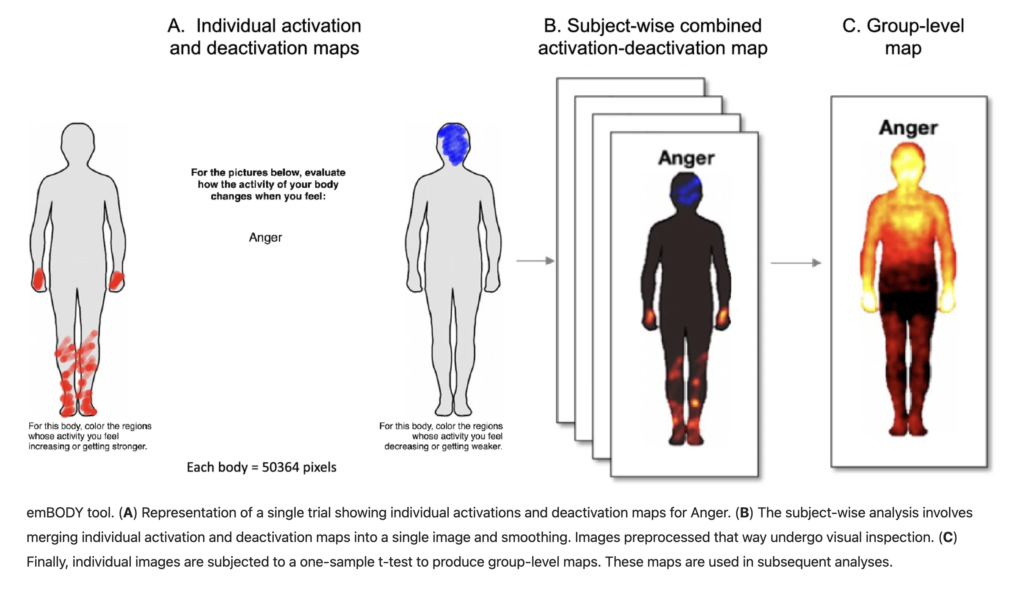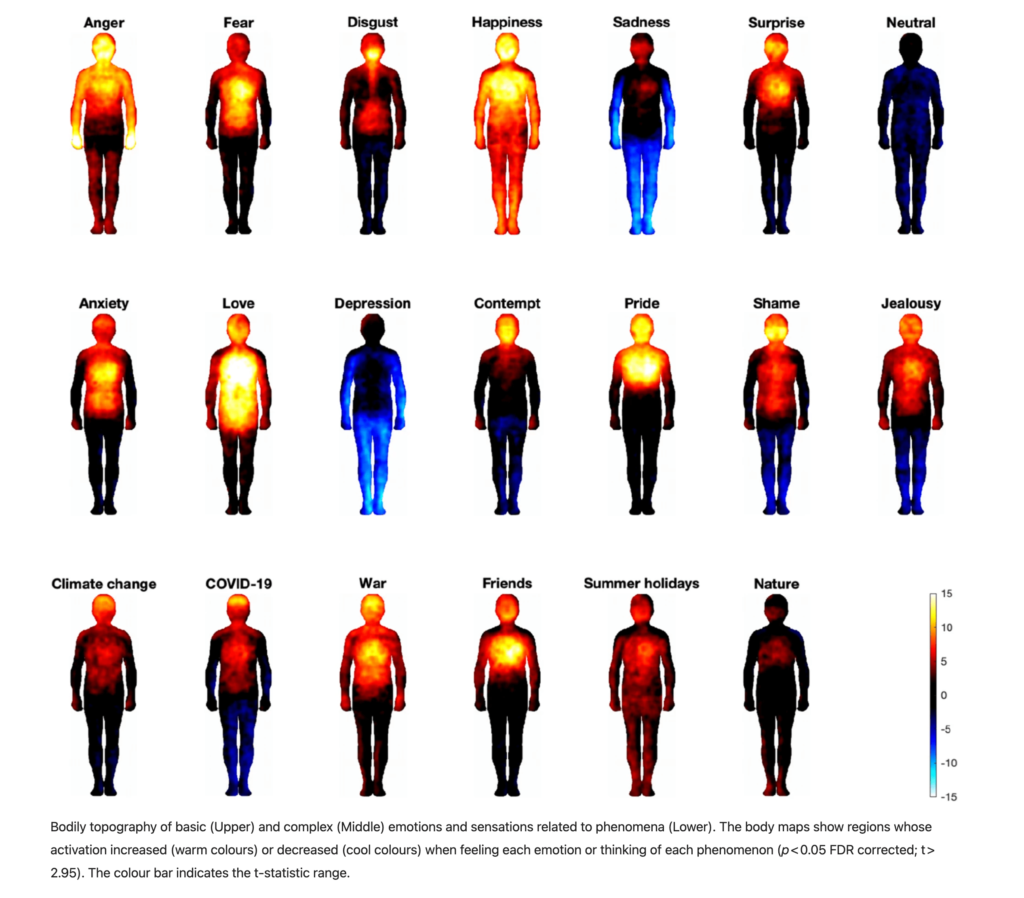In a recent publication in Scientific Reports, our team investigated a novel approach for studying complex emotions related to various phenomena. This study, led by Aleksandra M. Herman, examined the utility of the emBODY tool, a topographical self-report method, in mapping emotions related to intricate topics like climate change and the COVID-19 pandemic.
Understanding the Role of Bodily Sensations
Bodily sensations play a crucial role in our emotional experiences. However, people often differ in their ability to recognize and articulate their emotions, particularly when it comes to complex phenomena. Maybe people can better describe their bodily sensations? To bridge this gap, our team explored the potential of the bodily sensation maps (BSMs) approach to study emotions related to multifaceted subjects that can evoke a wide range of feelings.
The emBODY Tool in Action
Our study involved 548 participants who used the emBODY tool to mark where in their bodies they felt sensations (activations and deactivations) when they experienced distinct emotions or contemplated various phenomena. These phenomena included climate change, the COVID-19 pandemic, war, nature, friends, and summer holidays.

Maps for emotions
We uncovered maps of bodily sensations associated with different emotions and phenomena. What’s particularly significant is that each phenomenon had its own unique BSM, indicating that participants could distinguish between the feelings linked to various complex topics. However, some similarities were also found between the BSMs of phenomena and emotional maps. You can analyze the similarities and differences between the body maps yourself:

COngratulations to Aleksandra Herman and the coauthors! The article can be accessed here.
